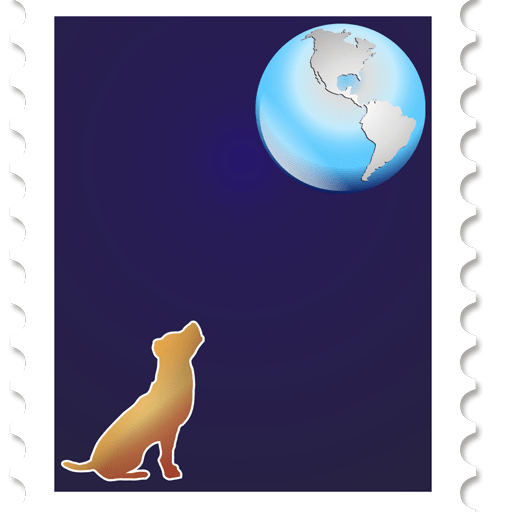The Seattle Coffee Roaster Scene
I am not a stereotypical Seattle coffee nerd. Admittedly, I enjoy my morning (and sometimes afternoon) cups of Joe like the majority of my Emerald City brothers and sisters. But I do not own an Aeropress, a Chemex or any other scientific gadgetry that seems to have infiltrated our coffee scene in recent times.

Wise words…
However, I do understand that the roasting process is critical to what ends up in my cup. And here’s the news – there’s a burgeoning force of now over 30 Seattle coffee roaster’s and that number is growing. I needed to know more about what they were doing to change the face of coffee in Seattle and beyond.
Seattle Coffee Roasting 2.0
In order to quench my thirst for coffee roasting knowledge, I got by with a little help from my friends in the business. I needed a Sherpa (or two) and they came in the form of the Bean Box Boys – Ryan Fritzky and Matthew Berk. These tech geeks-cum-coffee entrepreneurs started Bean Box just over a year ago and bring a variety of the freshest coffees roasted right here in Seattle to people all over the country.

My coffee sherpa’s – Matthew Berk and Ryan Fritzky of Bean Box
When I asked the BBB’s about the Seattle roaster scene Berk explained that, “There’s a wide spectrum in the community with respect to tradition vs. innovation. Only a couple of years ago people would say that Seattle’s a ‘very traditional’ town when it comes to appreciating dark roasts and blends – primarily for espresso based drinks.
He continued, “On the other end of the spectrum you see a far less traditional, more innovative group of small-batch roasters like Slate, Velton’s and Kuma. They roast a lot interesting single origin coffees with super high quality and more of a lighter roasting profile.”
Blonde, Brunette or Dark with Highlights?
I admit that on the rare occasion I go to Starbucks, I order the ‘Blonde Roast’. Not because I’m looking for a light roast per se, but because it sounds appealing. Which makes me wonder if roasting terms are just being used as another form of marketing.
Many Seattle coffee roasters have already migrated from perceived ‘traditional dark roasts’ to lighter, more vibrant roasts. One of which is Jesse Nelson who founded Conduit Coffee Company in 2011 and has roasted beans for the past four-plus years out of a nondescript building off Westlake Ave. ever since.
When I asked him about consumer preferences about light vs. dark roasts he replied, “We get a lot of ‘I like Navy coffee’ people that want something thin and dark. People think that they don’t want acidic coffee so they shy away from light roasts. But what they really don’t want is acidity in their belly. And most people like the citric acid flavors on their palate in lighter roasts whereas darker roasts will give them more bitterness.”

Time for sampling the beans
When asked about consumer preferences towards different roasts Fritzky stated, “I think that people are preset to say – ‘I like dark, strong, bold coffees. I want your darkest coffee.’ The truth of the matter is that the darkness and strength of the coffee are opposites. When people say they want a dark roast they are really getting less caffeinated coffee.”

Conduit’s humble roaster
Fritzky added, “The current ecosystem is hyper competitive. We see more specialization around sourcing and roasters are producing more short-term, small lots. Kuma is an example of a roaster that will put something out for 2-3 weeks and then it’s gone forever.”
The Art of the Blend
With all the talk about ‘Single Origin’ coffees, it’s easy to lose perspective on blends. Much like wine makers in places such as Bordeaux, roasters often excel at producing blended coffees that combine beans which complement each other to produce a superior product.
Scott McMartin has seen the largest and smallest scale roasting productions you can imagine. While learning from famed coffee pioneer Alfred Peet in the early 90’s he simultaneously moved up the corporate ladder at Starbucks where, at the peak of his career, he was in charge of roasting and coordinating the purchase of 470 million pounds of coffee annually.

McMartin brews the perfect cup
Now, McMartin runs Fundamental Coffee Co. in SoDo which produces small batch roasts focusing on robust blends. He’s a self-proclaimed ‘dark roast guy’ who’s roasts focus on flavor development, savory sweetness and richness.
When I asked why he’s bucking the current roasting trend in Seattle he explained, “The pendulum has swung so far to lighter roasts and there’s this extremism that I believe has gone too far. There is a bit of a lost art in blending. My darkest roast is done at 355 degrees and the result in the cup is a smoky, complex coffee with a lot of depth. It’s a blend I describe as a ‘huge beast of a coffee’ – and people want it.”

Don Pablo has nothing on Fundamental Coffee
He added, “We want people to enjoy coffee and not have to be a connoisseur. It doesn’t have to be so complicated that it alienates people.”
When I asked McMartin about the benefits of small vs. large batch roasting he was quick to say, “The thing that makes small batch different is really around how fast I can get my customers the freshest coffee possible. When the supply chain is so enormous – it’s hard to do that. Big companies are giving their coffees a 36 week shelf life – that’s not fresh. There’s a care that is implicit with a smaller batch and blending is done in a more intelligent way. My coffee has a shelf life of 4 weeks. And it’s vibrant and alive when you open that bag.”
Sourcing and Roasting
Sourcing is a personal process in a heavily commoditized market. And while large companies will lock in long-term contracts with big and small farms alike, small roasters like Fundamental have relationships with farmers in faraway countries that might produce only a few bags of coffee each season.
Each roaster looks for something different in sourcing. Some, like McMartin, prefer the robust nature of Latin. He noted, “I focus primarily on Latin America but I also buy Sumatra’s and New Guinea’s. Ethiopian coffees are a bit overdone and relatively expensive to buy. There’s nothing wrong with them but they are everywhere.”

Coffee Cherries in the Market
When I asked Nelson about the art of the roasting process he stated, “A lot of it is about the transfer of heat and evaporation of water. The process of protein browning and caramelization and knowing where those reactions occur. There’s really a ton of trial and error – just like in traditional cooking. There are different ways to cook and knowing what you want and how to get there. Being open to change is key.” He added, “I started with home roasting – learning about first and second crack, what they mean, roast profiles, etc. I bought a little roaster from Sweet Maria’s and roasting pan – learned from there.”
I mused about the prospect of starting a roaster while sitting with Berk and he told me, “I don’t know a single roaster that has done it for less than 3-4 years that didn’t apprentice for someone who has done it for ages. It used to be that companies would roast because they owned cafes and wanted to increase margin.”
Good Morning Seattle!
While I buy coffee from faraway, exotic places like Sumatra, Guatemala and Ethiopia – I tend to do it because I like fantasizing about those places and what it must be like there. I dream up fantasies of my coffee being grown by small cooperatives that are vital to the local economy.
And while there’s nothing wrong with daydreaming over a cup of coffee; it’s time to wake up and realize that a lot of what you are enjoying has to do with people closer to home than you might imagine. The Seattle coffee roaster scene is heating up – get to know a few and start experimenting with your morning ritual.
*Portions of this story originally appeared in Seattle Weekly




I think it all comes down to flavor preferences. Buy the coffee you like. Jesse Nelson’s “vibrant, citric acid” flavors taste sour and under-roasted to me. More like an agricultural product than a finished food product. Granted, I skew toward the darker roasts because I like the balance of flavors they offer. I especially like Fundamental’s Sumatra and Stemwinder Blend.
I think you are right Eric. Just like some people enjoy Washington Cabernet and dislike Bordeaux. To me, there’s no comparison as I much prefer the latter to the former monolithic style. I enjoyed coffee from both roasters and have to say that I preferred Scott’s methods – the Semaphore specifically. But that’s just my own personal taste.
Did you know that the US has very limited regulations for quality control of beans brought into the US? It is possible that beans that were destined for Japan or Europe could not meet quality regulations there and then be shipped to the US where they will be accepted. People should press their Congress(wo)man to correct this.